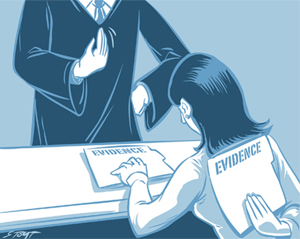
According to reporter Christopher Ingraham of the Washington Post, new federal statistics show that the rate of drunken driving in the United States fell to a 13-year low in 2014, the latest year for which data is available. The rate of driving under the influence of illicit drugs has not changed meaningfully in recent years but remains slightly lower than it was in 2008 and 2009 at the start of the Obama administration.
Here’s a summary of some other findings:
- In 2014, 27.7 million people aged 16 or older (11.1 percent) drove under the influence of alcohol in the past year, and 10.1 million (4.1 percent) drove under the influence of illicit drugs in the past year. About 7.0 million (2.8 percent) drove under the influence of alcohol and illicit drugs in the past year, including 5.9 million (2.4 percent) who drove under the simultaneous influence of alcohol and illicit drugs in the past year.
- The percentage of people driving under the influence generally increased with age through the young adult years and then declined with age thereafter; percentages were higher among males than females.
- The percentage of people aged 16 or older who drove under the influence of alcohol in 2014 (11.1 percent) was lower than the percentages in 2002 through 2012 (ranging from 11.8 to 15.3 percent).
- The percentage of people aged 16 or older who drove under the influence of illicit drugs was lower in 2014 (4.1 percent) than in 2002 through 2006 and in 2009 through 2010.
- The percentage of people aged 16 or older who drove under the simultaneous influence of alcohol and illicit drugs was lower in 2014 (2.4 percent) than in 2002 through 2010 (ranging from 2.9 to 3.4 percent).
Ingraham reported that although experts caution that while the trend is heading in the right direction, there’s still a lot of work to be done. “Although it is heartening to see a downward trend in levels of driving under the influence of alcohol, it still kills thousands of people each year and shatters the lives of friends and loved ones left behind,” said Frances Harding, director of the Center for Substance Abuse Prevention at SAMHSA, the agency that produces the survey.
The SAMHSA survey showed that young adults — particularly men ages 21 to 25 — had by far the highest impaired driving rates. More than 1 in 5 men ages 21 to 25 drove drunk in 2014, nearly 1 in 7 drove under the influence of other drugs, and roughly 1 in 12 drove while simultaneously drunk and drugged.
One the other hand, young adults have also seen the greatest reductions in drunken driving prevalence over the past 13 years. Since 2002, the drunken driving rate fell by fewer than three percentage points among drivers age 26 and older. But the rate among drivers ages 21 to 25 dropped by more than 10 percentage points. And the prevalence among the youngest drivers, ages 16 to 20, fell by more than half.
Ingraham reports there’s no single factor driving the decline in drunken driving rates. The Centers for Disease Control and Prevention credits interventions like strong drunken driving laws, public awareness campaigns, and ignition interlock systems that don’t allow drunk drivers to start cars.
Some states are experimenting with innovative programs that essentially take away the right to drink alcohol, period, for people convicted of certain alcohol-related crimes. There’s also evidence that ride-sharing services like Uber can reduce drunken driving rates, although not all researchers agree on this.
My opinion? This is extremely good news. Although it’s important to save lives by reducing traffic accidents through education, prevention, and all other possible measures; it’s equally important that defendants facing these criminal charges hire capable and competent defense counsel as soon as possible to protect their rights, review the evidence and ensure a fair trial when necessary.
Please contact my office if you, a friend or family member are charged with DUI. Hiring an effective and competent defense attorney is the first and best step toward justice.














